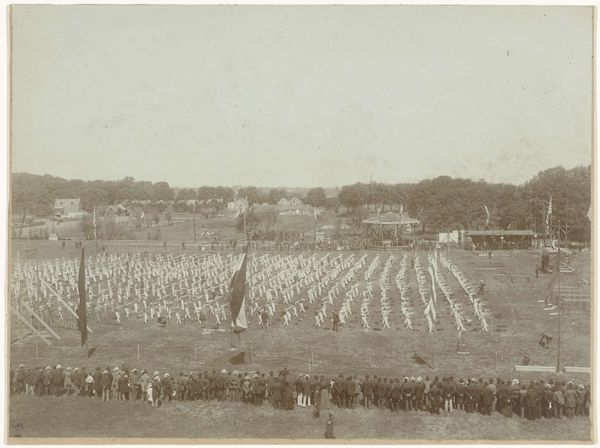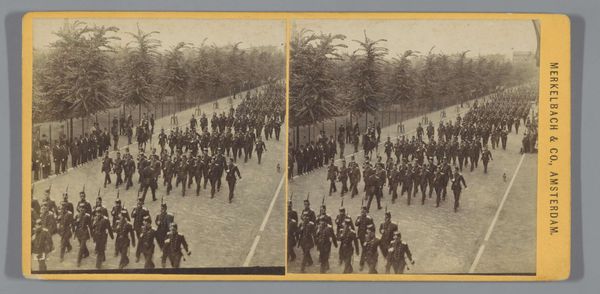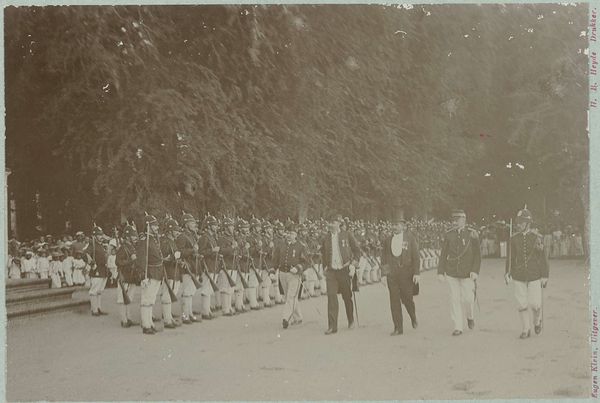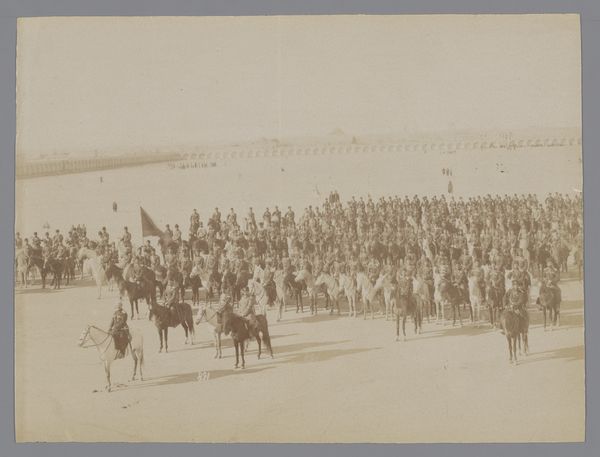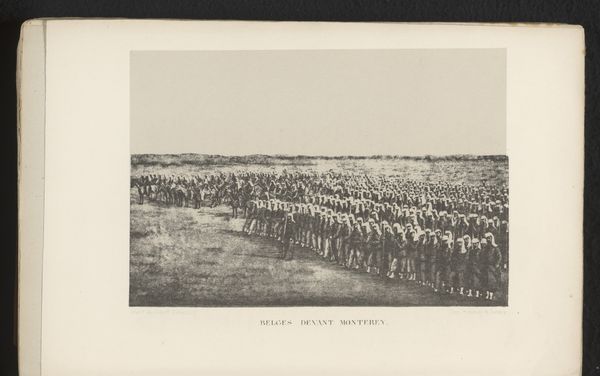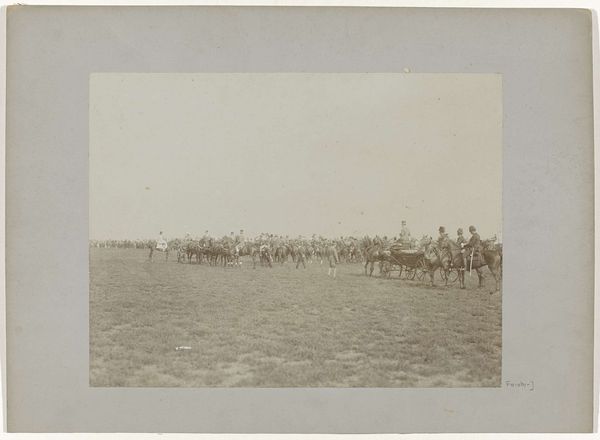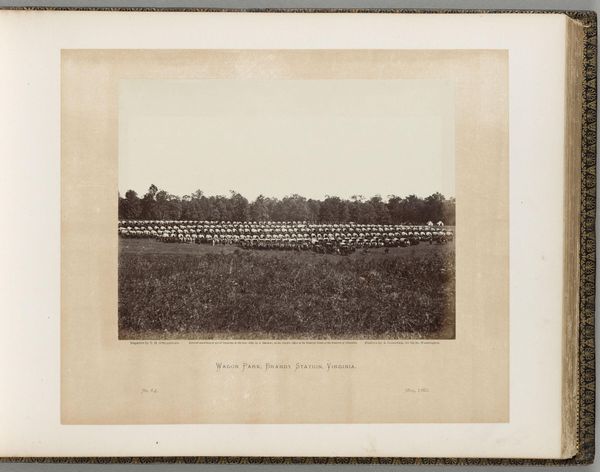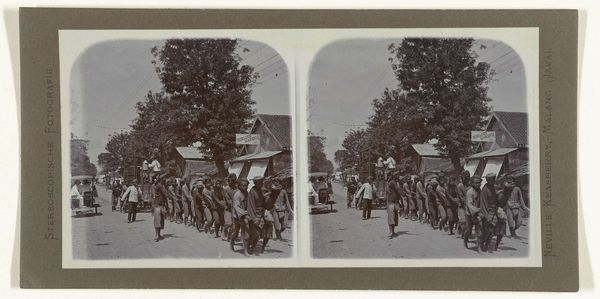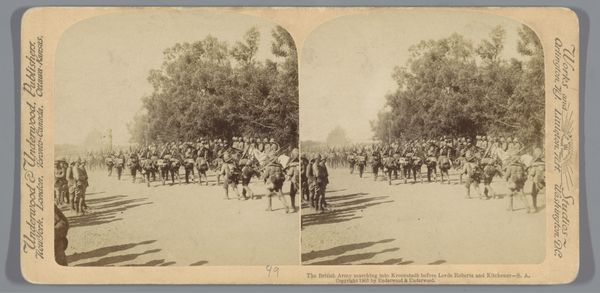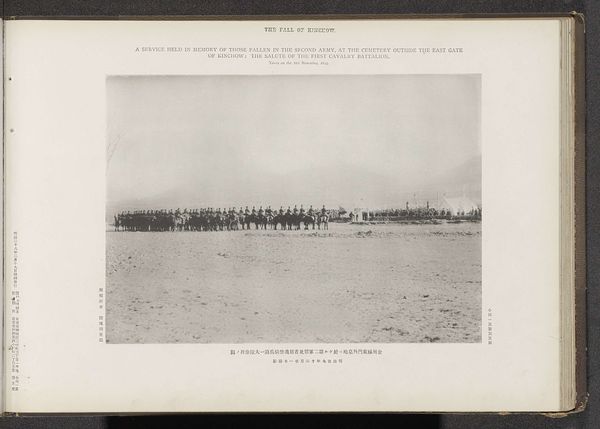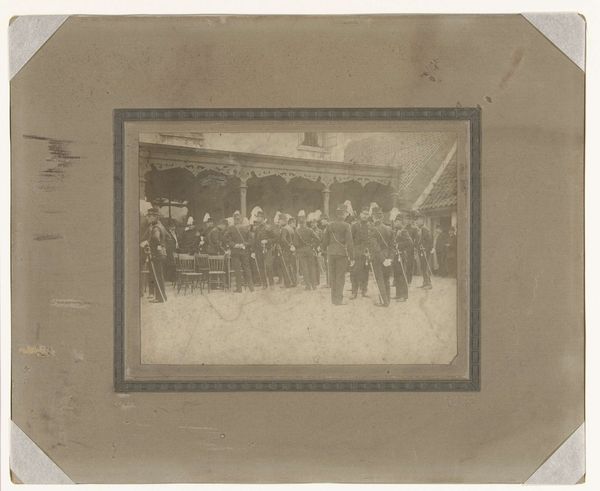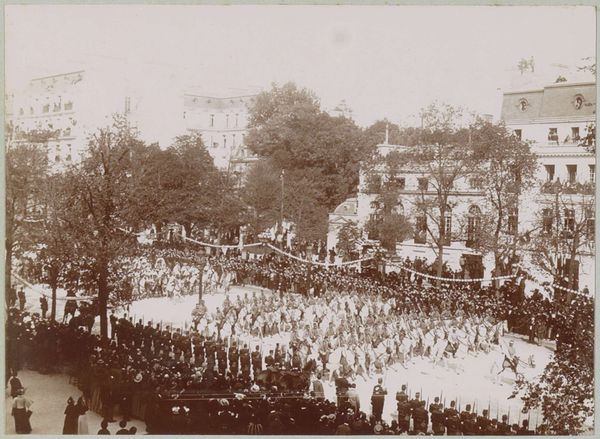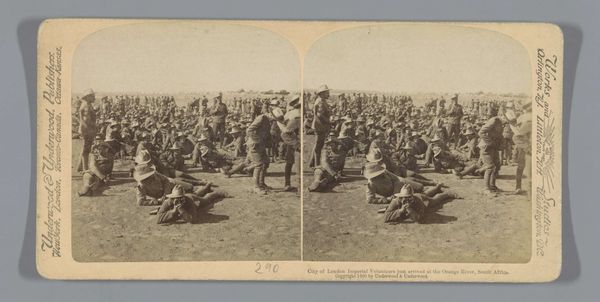
photography, gelatin-silver-print
#
landscape
#
photography
#
coloured pencil
#
gelatin-silver-print
#
history-painting
#
realism
Dimensions: height 102 mm, width 60 mm
Copyright: Rijks Museum: Open Domain
Editor: This gelatin-silver print, "Military Parade in Russia," by Albert Felisch, dates from around 1880 to 1900. It has this very formal and almost regimented feel. What statements about power do you see it making? Curator: The parade, seemingly a display of national pride, demands that we consider the historical and socio-political dimensions of that period. Russia was experiencing social unrest and revolutionary rumblings, while the Tsarist regime used these displays to project strength and authority. I see how the photograph might be interpreted through the lens of Marxist theory, especially Gramsci’s notion of hegemony – how dominant ideologies are normalized. Don't you see it too? Editor: I think I understand what you're saying. How does the artistic style connect with its message? Curator: Well, Felisch, embedded in Realism, meticulously documents every detail, almost as if presenting the viewer with "truth." But is it, really? Is it not propaganda masked by photographic accuracy? The sea of identical figures suppresses individuality and perhaps silences dissenting voices of women and men. I think it invites us to analyze it not merely as a record but as a consciously constructed statement about identity. What happens to ethnic minorities? Were all Russians included in this display of "national identity?" Editor: I didn’t consider the photograph as an expression, and what its silence may tell, rather than a simple representation of an event. Curator: Precisely. It pushes us to confront complex power dynamics and explore the image’s role in promoting specific narratives and historical frameworks, which is something I strive for when I consider art.
Comments
No comments
Be the first to comment and join the conversation on the ultimate creative platform.
